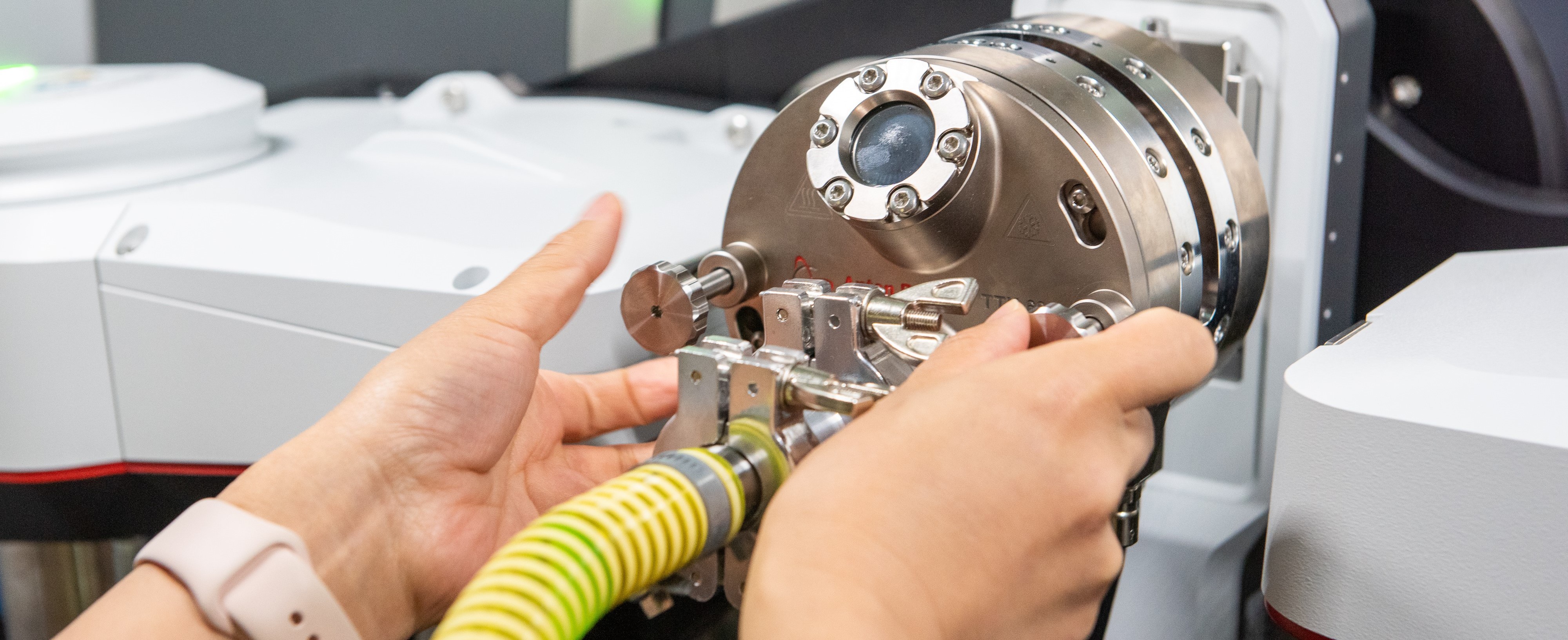Structural, Elemental and Chemical Analysis

We offer a wide range of cutting-edge techniques and instrumentation for structural, elemental and chemical analysis. Whether you are looking to understand materials, identify defects or improve quality control our experienced technicians are available to help you with your challenge.
Our technologies can be applied across a broad range of fields, from pharmaceutics and life sciences to the development of energy technologies and battery materials to cultural heritage and conservation. Beyond the techniques listed here, we provide additional services for elemental and chemical analysis through our Polymer Characterisation Facility. Please contact Claire Gerard () and we will put you in touch with one of our experts to discuss your requirements in more detail.
X-ray Diffraction (XRD)
Our XRD Facility houses state-of-the-art instruments for studying the crystalline structure of a wide variety of sample types including single-crystals, epitaxial thin-films, polycrystalline layers, ceramics and powders.
Electron Diffraction
As a partner in the world-leading National Electron Diffraction Facility we are bringing a step change to crystallographic structure determination with the ability to study nanocrystals in the range of <1µm.
Solid-State NMR
Warwick's Nuclear Magnetic Resonance facility houses 11 magnets for solid-state NMR and hosts the UK High-Field Solid-State NMR Facility, an 1.2 GHz NMR instrument funded by the UKRI Infrastructure Fund.
X-ray Fluorescence (XRF)
XRF is one of the most widely-used methods for the non-destructive analysis of major and trace elements in geological materials such as rocks, minerals, sediments and fluids.
X-ray Photoelectron Spectroscopy (XPS)
XPS can be used to determine both the composition and chemical state of surfaces. It shows what elements are presence as well as which other elements they are bonded to.
Solution-State NMR
Solution-state Nuclear Magnetic Resonance is a robust and non-destructive technique used to provide quantitative and qualitative information on molecular structures in liquid and dissolved solid samples.
Ion Mobility Mass Spectrometry (IMS)
IMS is an analytical technique used to separate and identify ionised molecules in the gas phase based on their mobility through a buffer gas. The technique is used to analyse complex samples including protein structures.
Gas Chromatography - Time-of-Flight - Mass Spectrometry
GC-ToF-MS is a highly sensitive technique able to separate complex mixtures and identify the compounds present, quantitatively and qualitatively, from a wide range of samples.
Gas Chromatography - Ion Mobility Spectrometry
GC-IMS is a highly sensitive sample analysis technique for the analysis of headspace from a wide variety of samples with applications including food, fragrances and clinical and environmental samples.
Inductively Coupled Plasma Mass Spectrometry
ICP-MS is a fast and sensitive technique used for elemental analysis of a range of materials including clinical, environmental and pharmaceutical samples.
Field Asymmetric Ion Mobility Spectrometry
FAIMS provides sensitive and fast headspace analysis of volatile organic compounds (VOCs) from a variety of sample types including clinical and environmental samples.
Circular Dichroism and Linear Dichroism
Circular dichroism and linear dichroism are spectroscopy techniques used to study the structure of biological molecules, including DNA, RNA and proteins.
Raman Spectroscopy
Raman spectroscopy measures inelastic scattered light from a sample, giving insight into structural properties. Applications are broad and include pharmaceuticals, life sciences, energy and carbon materials.
Transient Infrared Absorption Spectroscopy
TIAS can be used to study chemical processes initiated in a sample material after it is excited by an ultrafast laser beam, by measuring its absorption of infrared radiation.
Energy Dispersive X-ray Analysis
EDX is a technique used for elemental analysis or chemical characterisation by measuring x-rays emitted by a sample material in response to being hit with charged particles.
Electron Energy Loss Spectroscopy (EELS)
EELS is a technique for elemental analysis that exposes a sample to a beam of electrons and measures the amount of energy lost by the electrons via an electron spectrometer. It can be used for thickness measurements in Transmission Electron Microscopy.
(Scanning) Transmission Electron Microscopy
TEM and STEM are microscopy techniques that transmit a beam of electrons through an ultra-thin specimen to form an image of its structure. Cross-sectioning and sample preparation is performed using our focused ion beam scanning electron microscope.
Sequential Air Sampling
Our portable air sampler enables concentrations of organic vapours in air to be monitored over extended periods of time. Samples can then be analysed on the Gas Chromatography - Time of Flight - Mass Spectrometer (GC-TOF-MS).
